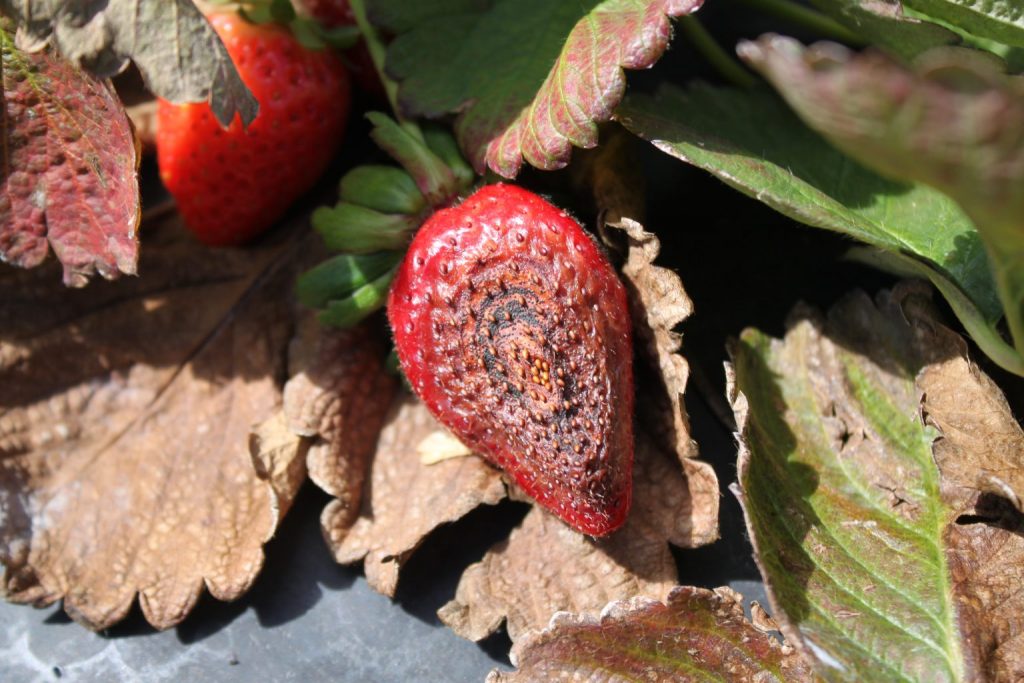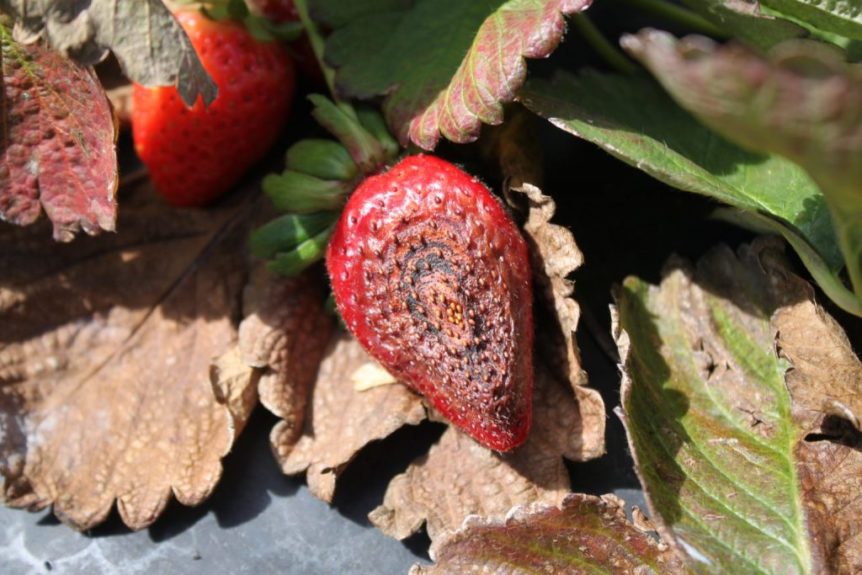By Clint Thompson
Some Southeast strawberry producers are not prone to applying fungicides during the fall after planting. That is likely to change with the high potential for Neopestalotiopsis, according to Phil Brannen, University of Georgia Cooperative Extension fruit disease specialist.

“Generally, we have not sprayed very much in the fall at all. But now it’s starting to be one of those things where it’s going to require us to spray a lot more,” said Brannen. “If you go to South Georgia, we have sprayed some Captan applications, but it’s never been a tight program, and that’s always been mainly for leaf spot predominantly. If you go down further south, Florida has a fall program. They spray a lot more in the fall. When you go to North Georgia, we’ve traditionally not sprayed very much in the fall at all.
“I don’t think anyone has planted that many strawberries yet, although, we’re getting right on the cusp of it, so some may have been planted. Anything that was planted with the rain we got (before Helene), it’s not good, I’ll put it that way.”
More Rain Means More Sprays Needed
Brannen emphasized that growers will need to apply more frequently if rainy weather conditions persist.
“If you’re in a dry period, I would spray every 10 to 14 days, and if you’re in a wet period, every 7 to 10 days. It’s the cost of doing business this year,” Brannen said.
Click here for fungicide spray options.
Neopestalotiopsis causes leaf spots on strawberry plants. It develops quickly and produces spores on the leaves. It can cause severe leaf spotting and fruit rot under favorable weather conditions. The disease was first discovered during the 2018-19 season in five farms and was attributed to one nursery source in North Carolina.
More than 20 farms experienced the disease during the 2019-20 season. It was attributed to two nursery sources early in the season in North Carolina and Canada.
“If you see plants that are not doing well, obviously they’re dying or spotted, especially if you know you’ve got Neopestalotiopsis in your strawberry plantings, you need to remove those plants and get them out of the field, because it’s going to spread very readily with splashing rain and blowing wind,” Brannen said. “Take out dead and dying plants rapidly. That should help to prevent spread some.”










